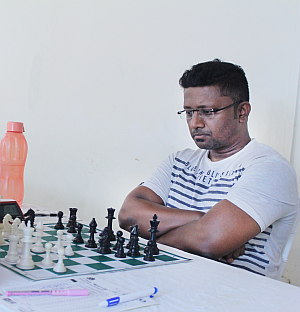 |
The Wrong Bishop
|
Why are endgames so difficult in chess? Because you either know the endgame concepts or you don't. You cannot find these concepts in a position by mere calculations. Also, they defy math. For example, in chess, the shortest distance between two points is not necessarily a straight line.
As you most certainly know, a bishop and a pawn will generally win against a lone king.
However, there is one important exception: when the pawn is on the edge of the board and the bishop does not control the promotion square.
In the next diagram, we have changed the previous position a bit by placing the Bishop on dark square. And this entirely changes the outcome of the game.
In an endgame with a Bishop and a Rook Pawn (a-file or h-file), the wrong bishop is one that does not control the promotion square of the pawn. Such a position is a draw if the defending King occupies or controls the promotion square. A draw because stalemate is also possible in such position.
Similar example can be seen in the following diagram:
“The wrong Bishop” position is also called “The wrong Rook Pawn”. In this type of endgame, the wrong rook pawn is the one whose queening square is the opposite colour as that on which the bishop resides. Many such positions are drawn once the defending King reaches the corner/queening square, because of the rook-file pawn and wrong Bishop, it will be impossible to flush out the defending King from there and the game will end in a draw by stalemate or by threefold repetition. Of course, both players can realise this situation much earlier and may agree for a draw much before stalemate happens.
And of course, there are exceptions as usual.
Not all wrong Bishop positions end in a draw. This is one of those exceptional positions where the defending King is unable to reach the queening square. In the next position, Black King is forced to move towards the wrong direction by White pieces.
There are other ways also to keep the defending King at the bay.
We conclude this topic with the following interesting position: